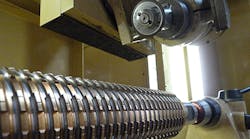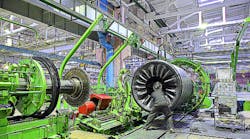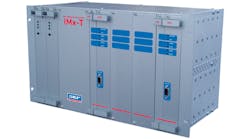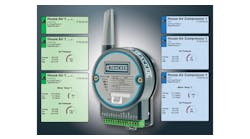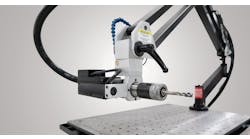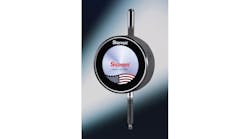Recognizing higher demand for power-use monitoring by machine tool operators, a group of industrial-condition monitoring specialists, machine manufacturers, and research organizations are collaborating with the European Commission to develop an integrated system for health assessment and power optimization of manufacturing machinery. The focus of their effort is “smart analysis” and cloud-based fleet management.
The Power-OM project (“Power Consumption Driven Reliability, Operation and Maintenance Optimization”) receives funding from the European Community’s Seventh Framework Programme, the current among a series of funding programs created by the European Union/European Commission to support and foster technological research and deliver economic growth.
The promoters of Power-OM explained that, over time and through extended operating cycles, machine tools’ condition will deteriorate. Also, applying predictive maintenance is difficult for most operators, due to access and the cost of retrofitting of the additional sensors needed to conduct predictive maintenance and/or condition monitoring routines. However, they noted that using power monitoring techniques and measuring the effects of machine condition on power use has not been used in any commercial application.
One obstacle has been the need to correlate multiple data inputs from the operational and control data sources.
They explain that the aim of the project Power-OM is to use the energy-consumption monitoring and profiling to establish an easy-to-implement condition-based maintenance (CbM) technique, with cloud-based and local level information as a mechanism to improve the overall business effectiveness.
There are three objectives:
• Optimize maintenance strategies according to available methods of predicting machine failure, and guiding maintenance planning procedures. From this, they will schedule maintenance operations to match shops’ availability, and to avoid unexpected equipment failure.
• Manage machines’ energy consumption as a production resource during routine operations, so as to reduce overall consumption.
• Provide machine tool builders with real data about the behavior of machines and their critical components, in pursuit of higher reliability.
The specific industrial objectives of the project are:
• To avoid 75% of unexpected equipment failures for spindles and linear guides; according to Power-OM, this would cover 3-10% of all systems’ availability, depending of the production dependencies).
• To ensure the application of the new maintenance strategy incurs no extra costs.
• To reduce overall energy consumption by 5%.
• To extend the Mean Time Between Failure (MTBF) by 25% for spindles and linear guides.
The project leaders further aim to develop a methods for data processing and analyzing mechanisms for early detection of faults in a production machine using current and voltage data, to complement the power-based predictions. This added-value information will be used on currently available CNCs and other sensors.
Finally, the program leaders state two further objectives: 1) to set-up an e-Maintenance platform to provide openness and connectivity toward the Power-OM components installed in each machine; and, 2) to develop added-value services in addition to the e-Maintenance platform including fleet diagnostic and bench mark standards of operation.
To date, the research has indicated an increase in overall equipment/business effectiveness by 5% and energy costs have been reduced by 5%, according to Power-OM project sources.
The Power-OM project, which started August 1, 2012, is scheduled to be completed by July 2015.
Roshni Amarakoon is affiliated with Monition Ltd., a condition-monitoring service provider and one of seven firms active in the Power-Om consortium.
